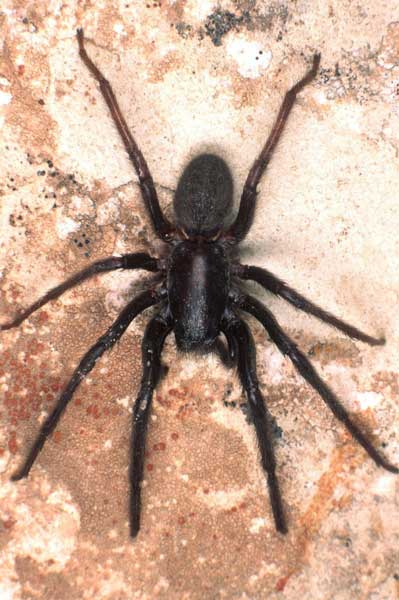Invasion of the aliens: The exotic species that are colonising Britain

Your support helps us to tell the story
From reproductive rights to climate change to Big Tech, The Independent is on the ground when the story is developing. Whether it's investigating the financials of Elon Musk's pro-Trump PAC or producing our latest documentary, 'The A Word', which shines a light on the American women fighting for reproductive rights, we know how important it is to parse out the facts from the messaging.
At such a critical moment in US history, we need reporters on the ground. Your donation allows us to keep sending journalists to speak to both sides of the story.
The Independent is trusted by Americans across the entire political spectrum. And unlike many other quality news outlets, we choose not to lock Americans out of our reporting and analysis with paywalls. We believe quality journalism should be available to everyone, paid for by those who can afford it.
Your support makes all the difference.Britain's climate may have been wretched for humans this summer, but foreign spider species are loving it. The population and range of exotic-looking migrants like the black and yellow striped wasp spider and poisonous false widow spider are booming and expanding as never before.
They will soon be joined by other alien insects. Stuart Hine of the Natural History Museum said: "There are plenty more to come from Europe and also from the Americas as our weather becomes more in line with hotter climates ... They are virtually queuing up to come here."
Already, the European and North African beewolf, a wasp that paralyses bees and wasps and lays eggs in them, has been decimating honey hives in south England. And last year two Asian tiger mosquitoes, which can transmit up to 23 infections, were found in a garden in Gloucestershire. Mr Hine said: "It is plausible that species of the black widow may take up residence here."
Confirmation of something significant stirring in our undergrowth and woods has been found by Butterfly Conservation, which will present evidence to this week's Royal Entomological Society meeting in Plymouth that large numbers of British butterflies are expanding their range north. They include the speckled wood, comma, orange tip peacock, holly blue and gatekeeper. The conclusions are based on the observations of 10,000 enthusiasts around the country. Since 1995, people have been recording sightings in their gardens, the countryside and urban areas, enabling the UK to have some of the world's most comprehensive data on insect species.
Butterfly Conservation's Richard Fox believes that as the rest of Europe begins to heat up, the UK will also start to see species arriving from the continent. Butterflies such as the map, which has spread through Europe over the past 50 years, may become permanent breeding residents here over the next few years. But, even though butterflies are on the move, researchers say that around three-quarters of all species are on the decline, largely through loss of habitat.
Some foreign species of bugs may already be here. Many of the spider invaders have existed here in tiny, isolated colonies for decades – the wasp spider was first seen in 1922 – but our cold winters confined them to the south coast and around southern ports. In the past 10 years, they now seem to be on a relentless march up the country.
The Mediterranean wasp spider, which once clung to the south coast, is now reported as far north as Cambridge. The female's conspicuous yellow and black stripes have caused alarm among the public. But the bite of this non-aggressive species is no worse than a bee sting.
Among the invasive species, the tube web spider and false widow spider seem to be doing particularly well. The tube web was first recorded in Britain in 1845 but remained confined to southern ports until the 1990s, when expansion began. It can be recognised by its distinctive funnel-shaped web and green iridescent jaws. It is now firmly established in London.
The false widow, originally from the Canary Islands, which became established here in the 1980s, has seen a dramatic increase over the past seven to 10 years. Mr Hine said: "There are probably tens of thousands, and in a few years they will be in every garden in the south of England".
Often mistaken for the notoriously deadly black widow spider, the false widow has a bite that causes intense pain, along with feverishness. In Dorchester in 2006, a man spent three days in hospital with symptoms of heart seizure after being bitten by one. Alistair Lavery of the Royal Society for the Protection of Birds warned: "It is aggressive and has established quite a reputation for snapping at people who come too close."
The daddy long legs spider is another foreign species expanding its numbers and moving north. Ten years ago, these were seen only in houses; five years ago, they ventured out to garden sheds. In the past two years, they have been spotted outside. The Moroccan harvestman is another incomer, finding Bournemouth very much to its liking.
The spider season begins in September, when females are largest and males look for mates, so in the weeks ahead we can expect to notice more. Mr Hine said that Steatoda paykulliana, another species of false widow, is breeding in Plymouth. This brings the number of false widow species in Britain to seven. However, Mr Hine said that it is unlikely we will ever see truly venomous sub-tropical spiders here.
Join our commenting forum
Join thought-provoking conversations, follow other Independent readers and see their replies
Comments